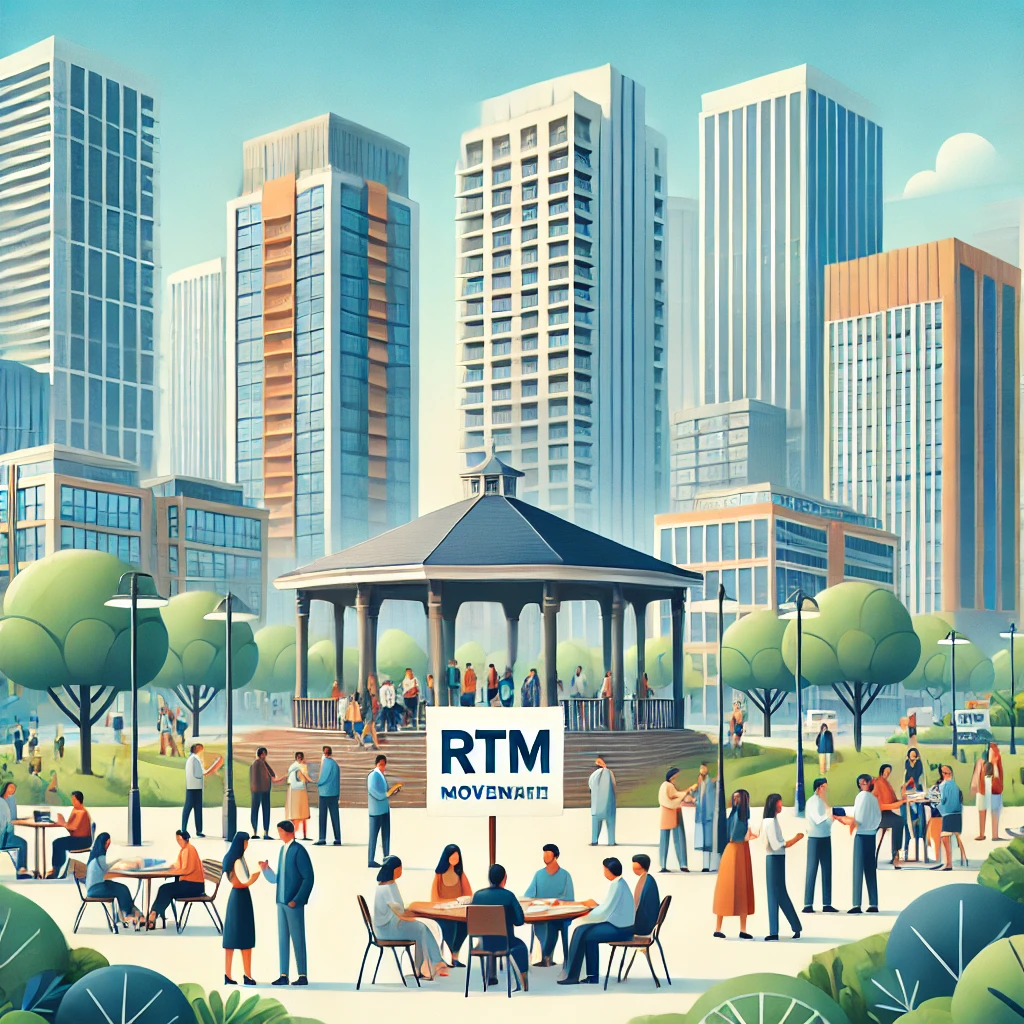Right to Manage (RTM)
After years of research and trying all the options available to us to resolve matters with the managing agents, the PCRA has come to the conclusion that Right To Manage (RTM) is the only way that we will resolve the ongoing issues that we as leaseholders are generally experiencing on an ongoing basis, which include:
- Escalating and extremely high service charges
- Very poor maintenance/services not provided
- Poor accounting and lack of transparency
- Poor communication and accountability by the managing agents (currently Centrick)
While we have tried regular communication, formal complaints, Section 21 and 22 requests to gain transparency on where our money is spent, the managing agents continue to offer a very poor standard of service while increasing service charges to extremely high levels.
The only way out of this conundrum is by managing our own buildings (and appointing a managing agent who works for us) – via the process of Right To Manage.

What is Right To Manage (RTM)?
Right To Manage is a right that we have, by law, that allows us to manage our own building if there is a majority of leaseholders who are unhappy with the current state of the managing agent and how the buildings are managed. We require 51% of leaseholders to want to do this, and then we can start the formal process of getting back control of our building and appointing a managing agent of our choosing who will manage the building and report to us – not the freeholder (E&J).


What are the advantages?
- We choose the managing agent, and they act on our behalf. Services and communication will improve dramatically
- Expect lower costs; current managing agents gain hefty commissions on work and split this with the freeholder at our expense. Managing agents appointed by us would not add a ‘kick-back’ on top of fees, and fees would be fair and reasonable, not exaggerated like they currently are
- You can expect managing agents appointed by us to follow the law
- We have a say in day-to-day activities, and will experience cooperation and transparency, and will be involved in decision-making and can have a say on costs
- If we would not be happy with the managing agent, we could change them
But don’t just take our word for it; here is a link to some of the benefits that RTM can bring:
Can I be a part of this?
A movement is happening in Park Central, which comprises 13 blocks. The PCRA strongly supports RTM, and we encourage people in all the blocks to work with us so you can experience the freedom and peace of mind you gain when you have achieved RTM for your block. Below, you can find a list of the blocks and the links to the corresponding RTM groups.
If you are a leaseholder, please click on the relevant link to join the WhatsApp group for your block.
If you are a tenant:
- Click the link to join the chat and be involved – it could result in cheaper rent and/or lower costs in the future
- Get in contact with your landlord and send them this page’s web address (https://www.pcra.co.uk/RTM)
Once 51% or more of the leaseholders are on board for a block, that block can start the RTM process, and everyone will benefit.

Block WhatsApp QR Codes
Target = 50%
29 Longleat Avenue
Pending QR Link

1 Langley Walk
Pending QR Link

18 Wheeleys Lane
Pending QR Link

26 Wheeleys Lane
Pending QR Link

56 Bath Row
Pending QR Link

46 Mason Way
Pending QR Link

79 Cregoe Street
Pending QR Link

48 Alfred Knight Way
Pending QR Link

16 Alfred Knight Way
Pending QR Link

42 Alfred Knight Way
Pending QR Link

48 Mason Way
Pending QR Link

52 Mason Way
Pending QR Link

PCRA FAQs on Right to Manage (RTM)
General information about Right to Manage (RTM)
Heat Network and Boilers (and other major projects)
Right to Manage (RTM) is a legal right under the Commonhold and Leasehold Reform Act 2002 that allows leaseholders to take over the management of their building from the freeholder. This means leaseholders can collectively form an RTM company to manage the property themselves or appoint a managing agent. RTM does not require proof of poor management by the freeholder, making it accessible based solely on the leaseholders’ desire to manage their property better.
Any leaseholder in a building with qualifying criteria can apply for RTM. Typically, at least 50% of the leaseholders must support the RTM process. Additionally, two-thirds of the flats must be held by qualifying leaseholders (those with leases of more than 21 years), and less than 25% of the building should be commercial space.
Yes, buildings where more than 25% of the area is used for commercial purposes or where the landlord lives in the building and it contains less than four units cannot use RTM. This ensures RTM is primarily applicable to residential properties where leaseholders’ interests are most significant.
The main benefits include:
– Control Over Costs: Leaseholders can reduce service charges by eliminating unnecessary fees and commissions.
– Transparency: Full visibility into how service charges are spent.
– Quality of Services: Ability to choose better service providers.
– Accountability: Managing agents report directly to leaseholders, ensuring their interests are prioritized.
The RTM process involves several steps:
- Eligibility Check: Confirm your building meets the RTM criteria.
- Form an RTM Company: Leaseholders create an RTM company.
- Serve Notice: Notify the landlord about the RTM claim.
- Response Period: The landlord has 30 days to respond.
- Management Transfer: If uncontested, management responsibilities transfer to the RTM company.
- We would have control over picking the gas and electric supplier. So we can ensure we’re always on the best tariff.
- We can ensure that there are no commissions split between the Managing Agent, the Freeholder, and Ginger Energy.
- Control over Ginger Energy’s standing charges levied ontop of the supplier’s standing charge (to manage billing, debt, and invoicing etc).
- Ensure that invoices and charges do not build up.
- We can get the best possible energy supplier, and invoicing supplier for the cheapest price.
The collective money will kept in reserves for the building, and when the RTM takes over the money will be transferred into the control of the RTM.
- A full range of independant companies will be approached for tender. Whereas, Centrick will likely side with their preferred partners which will raise costs and often incur a high commission that leaseholders will need to pay.
- Centrick will charge an additional Project Management fee for doing almost nothing in return. As an RTM group, we’d can ensure that we are not charged extraneous fees.
Over the years insufficient reserves have been built up for major projects. Both due to poor planning and budgeting by managing agents, effectively not building up the reserves, and also, them using service charge for maximising theirs and the Freeholder’s profit margins to the deprement of the leaseholders.
With a managing agent appointed by the RTM, we can ensure that appropriate planning is undertaken, suitable reserves are built up for any anticipated costs for major works, that a full range of independant companies will be approached for the best possible quality and value, no separate project management fees will be added, and no commissions will be added on top and 100% of the money will be spent on the project.
Service charge money will be built up in reserves towards major works so that huge unexpected bills will be a thing of the past.
Major works could include things like:
- Roof replacement (could be £100,000s)
- Lift replacement (circa £100,000)
- Redecoration
- Fire remediation works (like replacing fire doors)
- and others, etc.
Other
Yes, don’t just take our word for it. Here are some independent resources that you might find useful:

Got a question?
If you have a burning question that hasn’t already been covered in our FAQ above, don’t hesitate to get in touch with us. We’d be happy to help.

